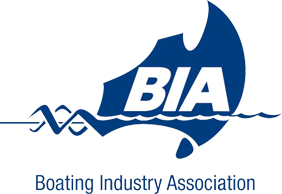Inspecting Your Boats Mast and Rigging
29 June 2022Two parts of your boat that are significant to its operations are the mast and its rigging.
The mast intends to carry the sails and spars. It also provides the needed height for the signal yard, navigation light, and radio aerial. The rigging, alternatively, is dedicated to supporting the mast and can be adjusted to change the shape of the sails and spars. It is comprised of ropes, wire, swage terminals, turnbuckles, and cables.
Checking and maintaining your boat’s mast and rigging can ensure that the whole marine vessel will work perfectly while sailing. Here are some components of your mast and the rigging that should be assessed and inspected before getting out on the water.
Welds and Rivets
The welds on your mast and boom must be inspected regularly to ensure that they have not yet corroded. If some of the welds have not been done correctly, they may attain some sharp edges, cracks or crevices that can encourage corrosion. Damaged welds must be rewelded to prevent further damage.
Just like the welds, you must also check the condition of your rivets. Once you noticed loose rivets, they must be drilled out and replaced with the next-larger size rivet or a larger metal thread screw. One of the most common areas this will happen is on the gooseneck because each time you tack or jibe the angle of the load on the gooseneck changes, which over time works the rivets loose.
Mast Fittings
Most mast fittings are made from either stainless steel or bronze. Some examples of these fittings are cleats, tangs, and winches. Since they are installed onanaluminium or carbon mast in most cases, they must be applied with anticorrosive paste, such as Tefgel, nylon, or plastic and other similar elements between the 2 different metals to prevent corrosion. Riggtech uses Tefgel as it is non-toxic, it is easy to apply and it doesn’t dry or set, making it easier to remove fittings years and years down the track.
Bubbles near the fittings on the painted mast indicate that they are corroding. As for an unpainted mast, the fittings may have corroded once white powder and pockmarks can be seen around them. Once you spot these signs, contact Riggtech for added help. If left untreated for extended periods fittings can break, fittings can be eaten away, and critical failures may occur.
Chainplates
The chainplates are fittings that connect the standing rigging to the deck your boat.These should be angled in line with the stays, so that the loads can be evenly distributed cross pins and to prevent point loading. Failure to align the chainplates can lead to breakages.
Chainplates commonly pass through the bulkhead and are bolted to strongpoints of the hull. If you notice some discolouration, rot, and delamination on the bulkhead, it means that the chainplates are already stressed, and theycould be leaking. If water enters the bulkhead,it can cause the timber and/or fibreglass to rot further.
Another factor to consider with chainplates is crevice corrosion. Crevice corrosion that occurs in areas where no oxygen can get to the surface of metal, ie. where the chainplate passes through the deck, bolts passing though the deck, behind chainplates bolted the hull strong points. Therefore, chainplates should be periodically removed and inspected, this should only be done then the mast is removed from the yacht or one at a time while the mast is supported with halyards.
Turnbuckles
Open turnbuckles are easy to inspect, they are also not expected to retain moisture. Closed turnbuckles, alternatively, may preserve moisture in the barrel. But what is great about these turnbuckles is they can retain lubricant better than the open ones. At least once a year, you must wipe them clean and lubricate them.
Other parts of your mast and rigging that must be inspected are mast steps, stays, shrouds, spreaders, masthead, wires, gooseneck, and insulators. Call us at Riggtech for more information or assistance.
Optimized by: Netwizard SEO


